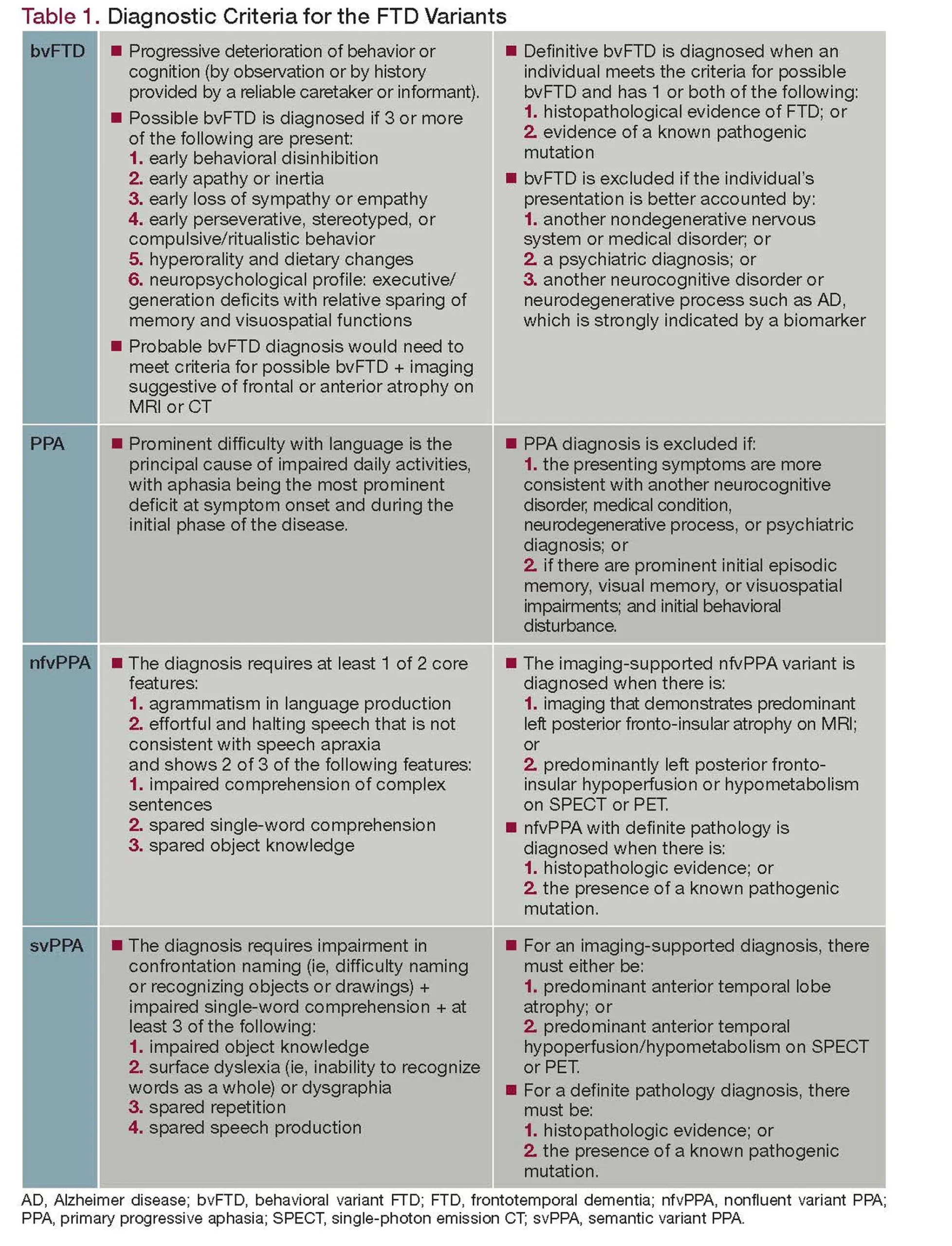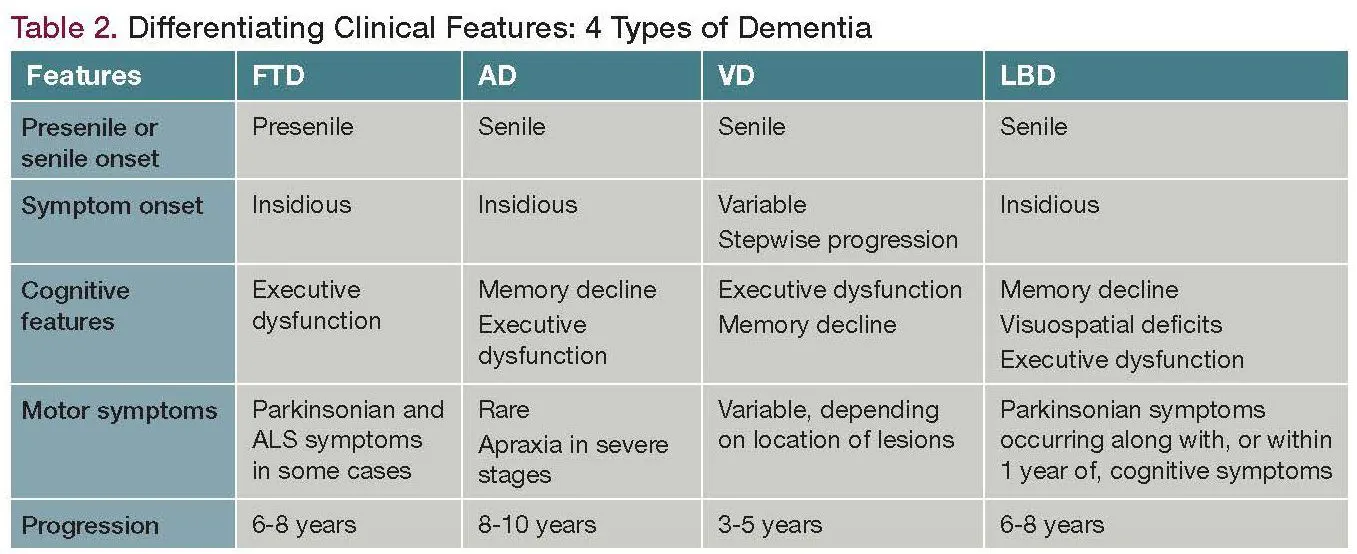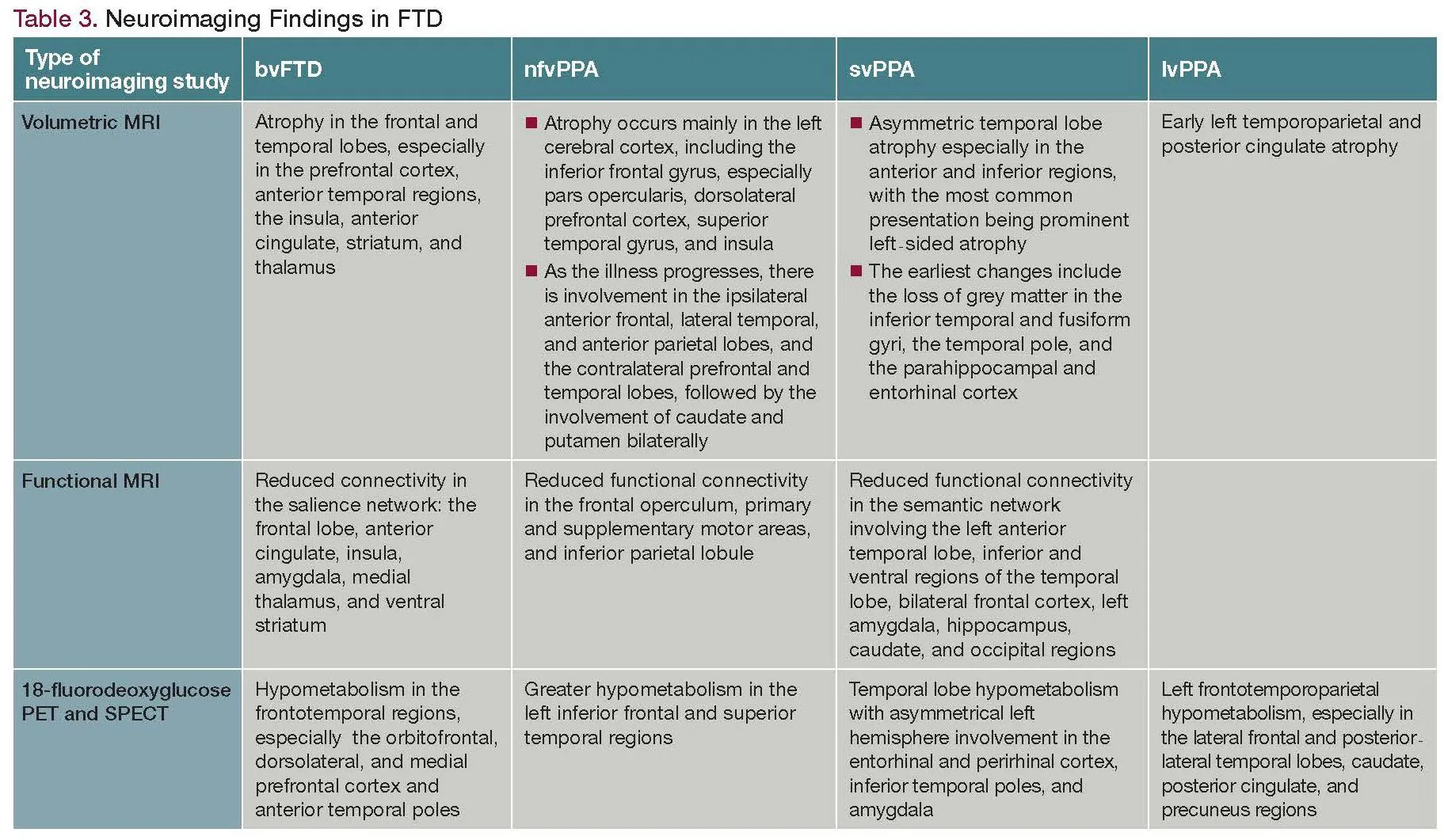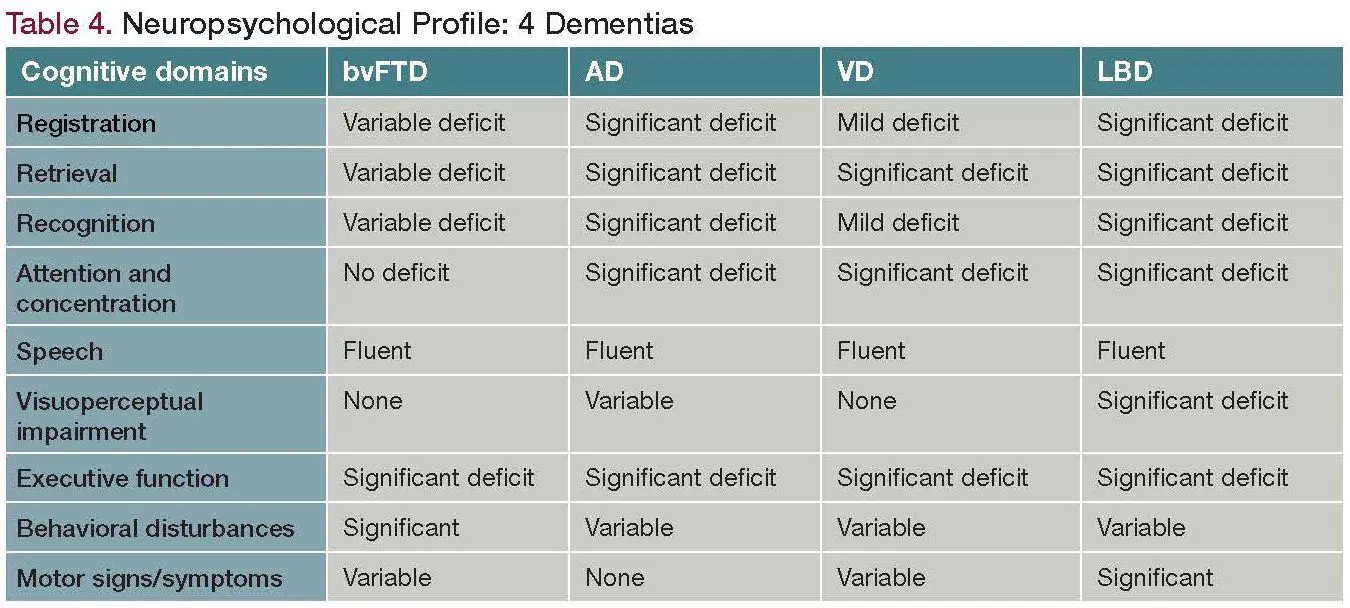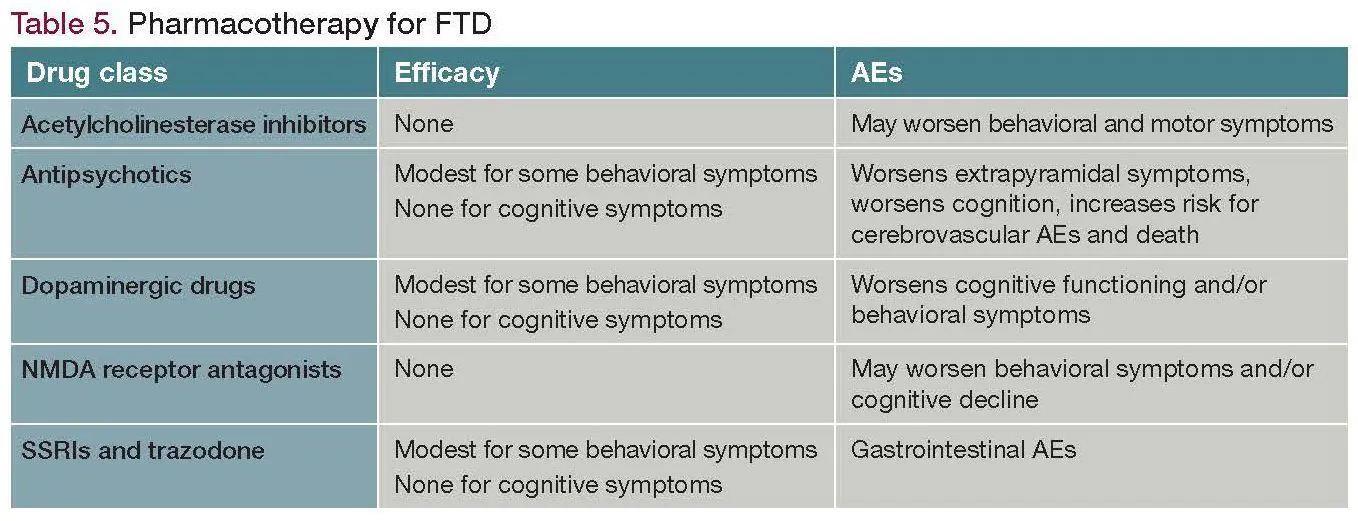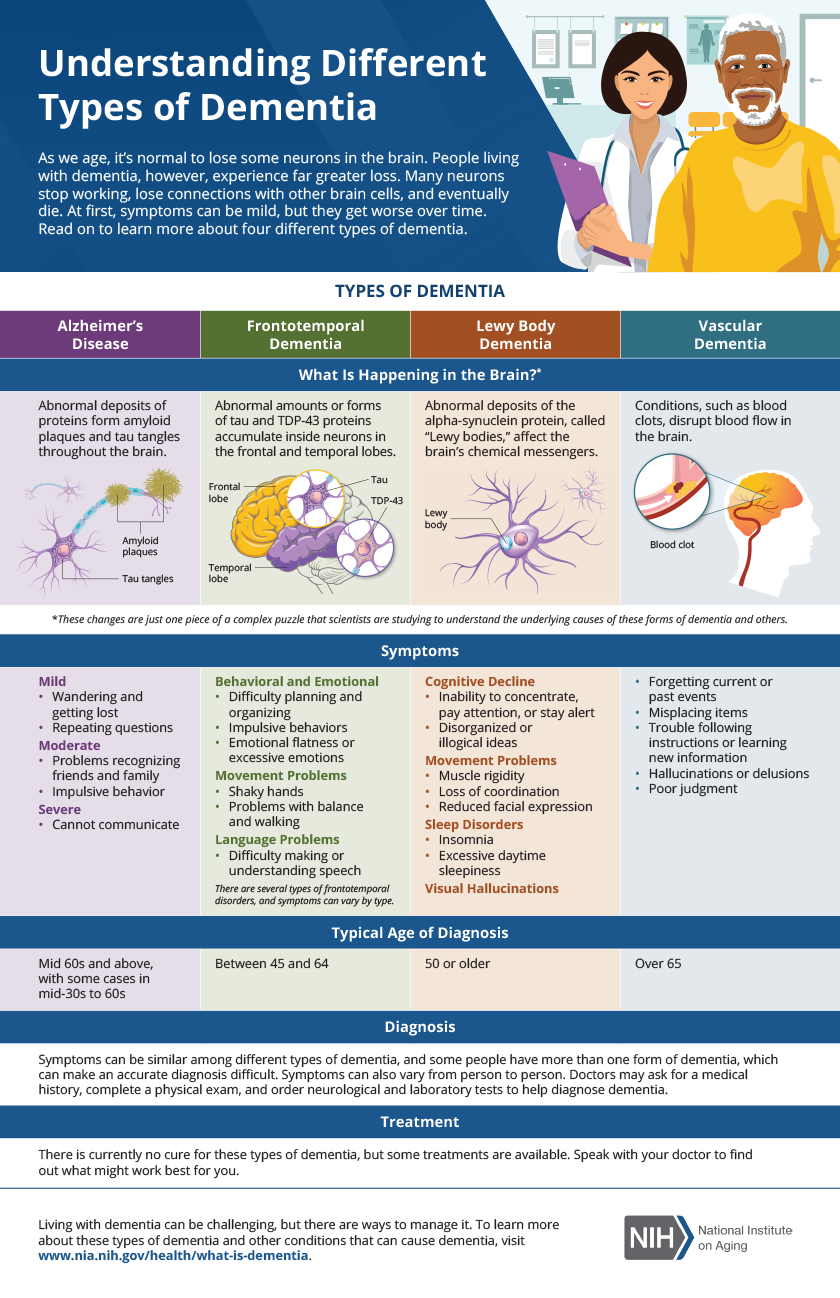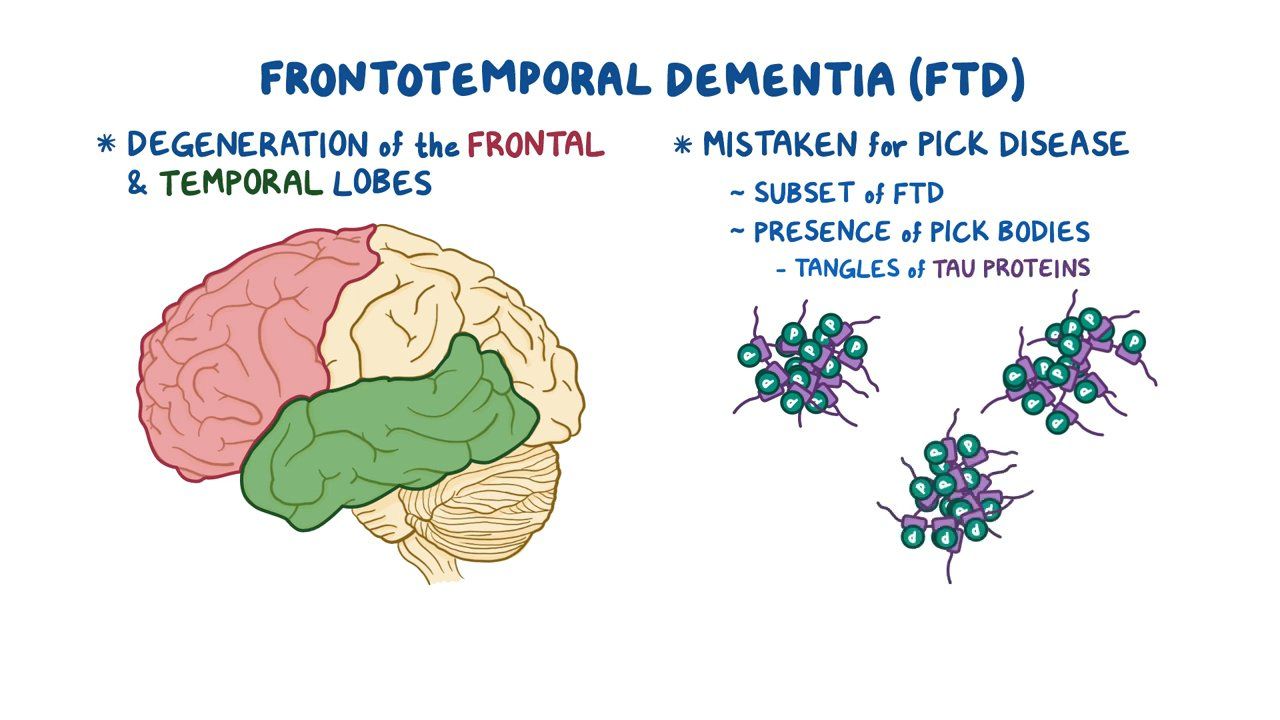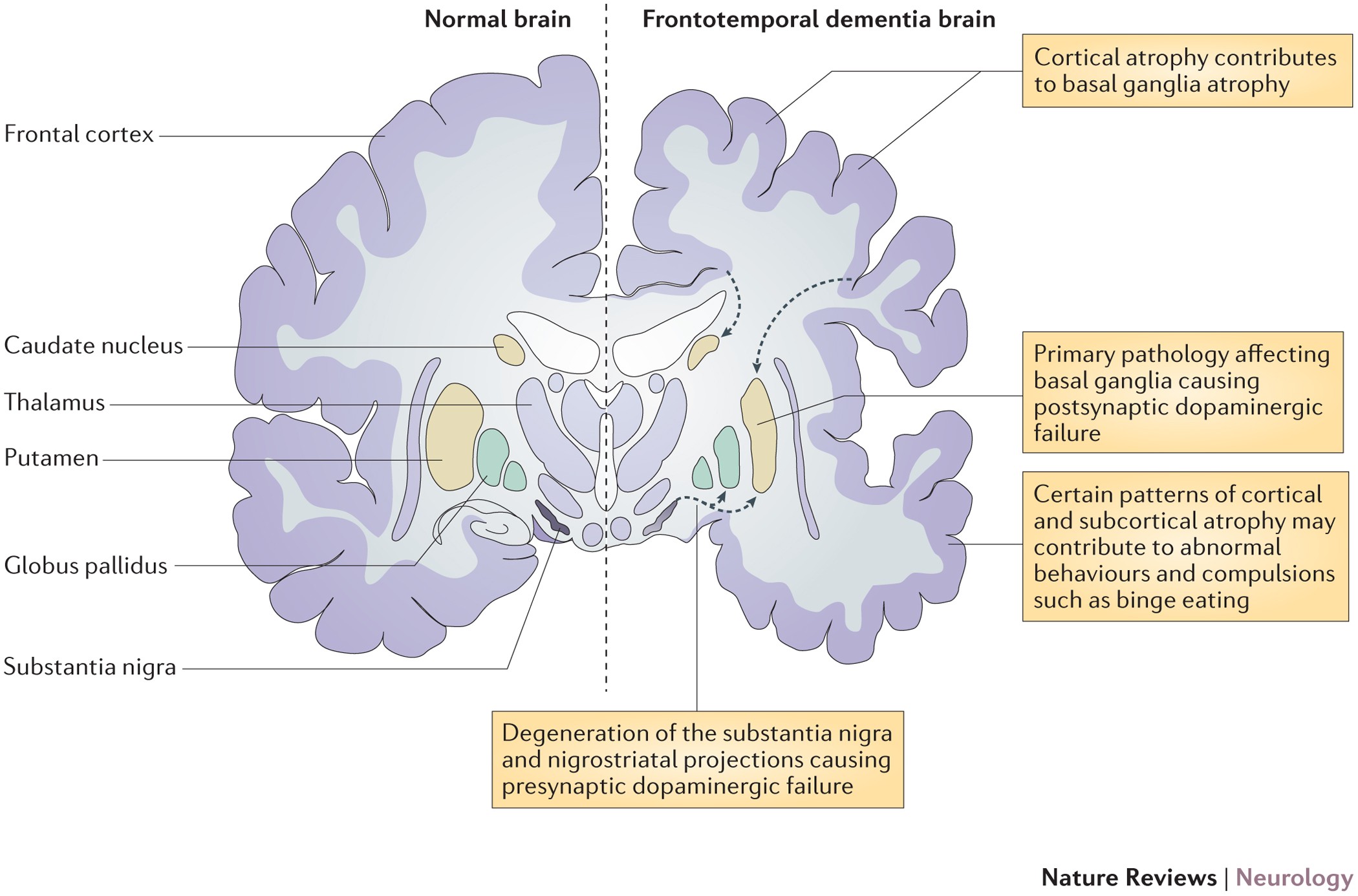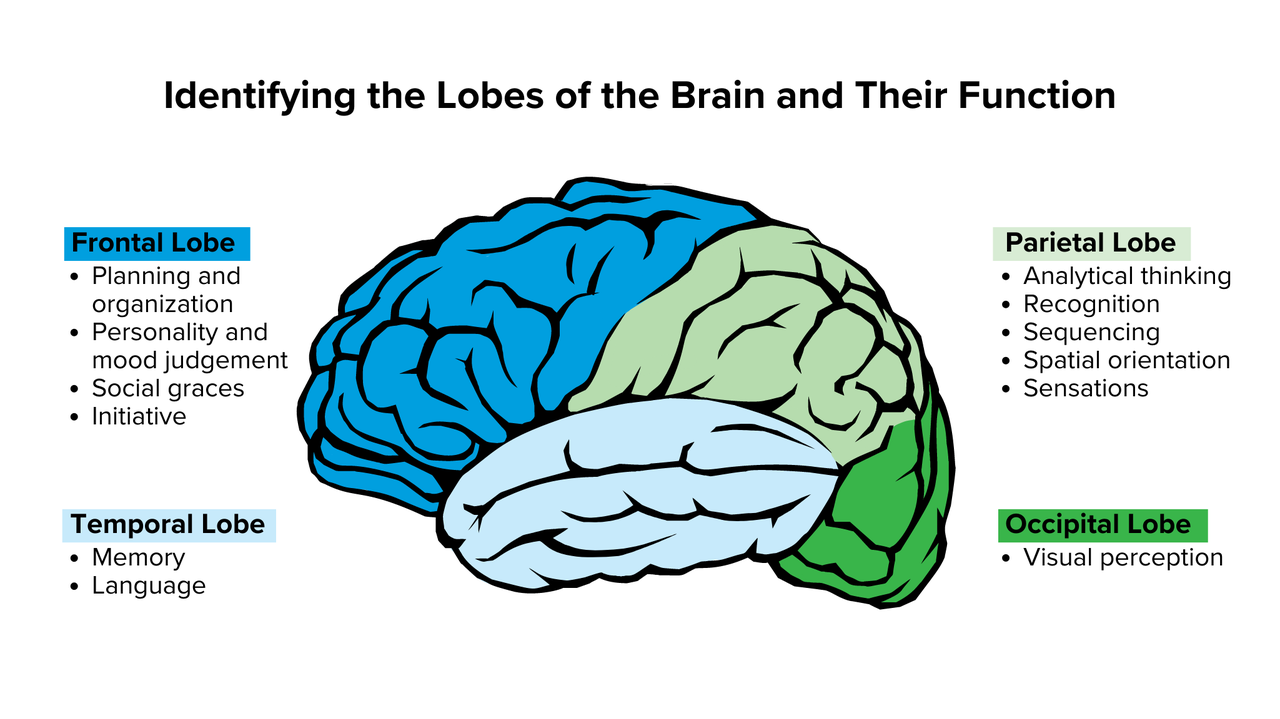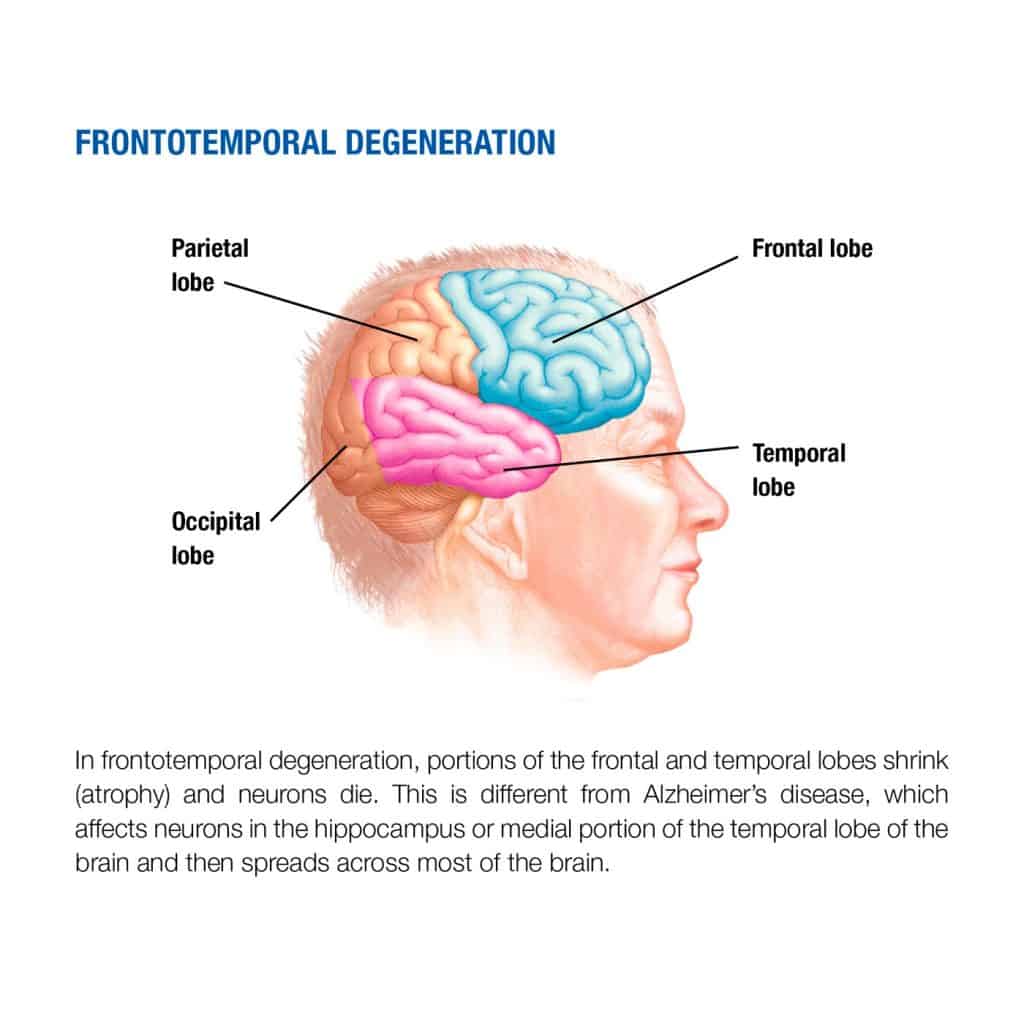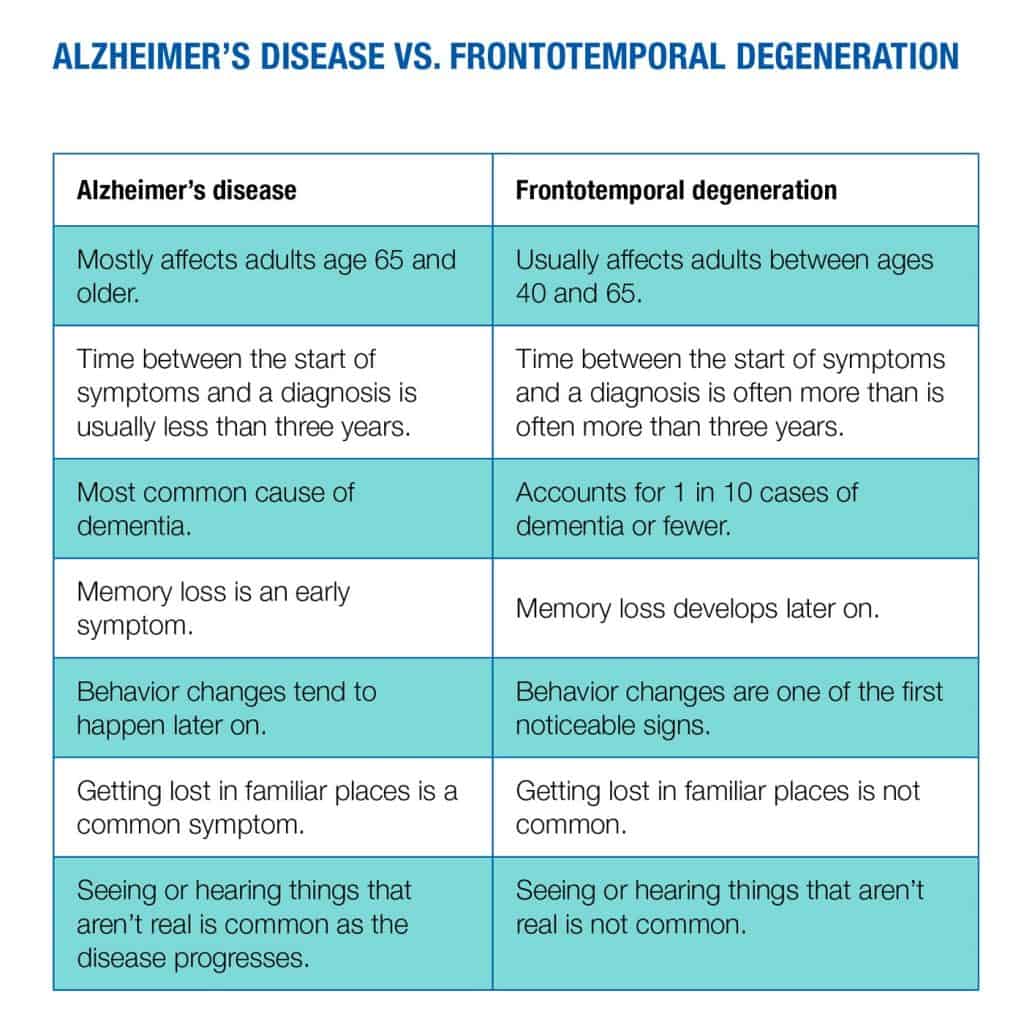
What is frontotemporal dementia?
Frontotemporal dementia (FTD) is a term for several diseases that affect the front and side lobes of the brain — the parts of the brain that control mood, social behaviour, attention, judgement, planning and self-control. It often affects people at a younger age than Alzheimer’s disease, typically between 45 and 65.
FTD causes the frontal and temporal lobes of the brain to progressively shrink (atrophy).
Depending on which parts of the brain are affected, a person with FTD may experience reduced intellectual abilities, personality changes, emotional problems, or lose the ability to use language. Unlike in Alzheimer’s disease, the person’s memory may not be affected.
What are the symptoms of frontotemporal dementia?
The symptoms of FTD usually start gradually and get worse over time.
Behaviour and personality changes
- being rude
- acting impulsively
- losing inhibitions
- not being able to adapt to new situations
- loss of empathy
- being subdued
- losing interest in people or things
- developing repetitive behaviours
- changing eating habits, craving sweet foods
- neglecting personal hygiene
Language problems
- using the wrong words
- forgetting vocabulary
- repeating some words or phrases
- forgetting the meaning of words
- speaking slowly
- losing the ability to speak altogether
Losing mental abilities
As the condition progresses, people with FTD may:
- need help deciding what to do
- lose the ability to plan
- develop poor judgement
- be easily distracted
- be unable to understand abstract ideas
- stop recognising familiar people or objects
- develop memory problems
What causes frontotemporal dementia?
It is not known why some people develop FTD. It sometimes runs in families.
What are the types of frontotemporal dementia?
There are different forms of FTD. These include:
- Behavioural-variant frontotemporal dementia — the person’s behaviour, habits, personality and/or emotions are affected.
- Semantic dementia — initially the person will lose some of their language abilities. They may also have trouble recognising people.
- Progressive non-fluent aphasia — the person gradually loses the ability to speak fluently. Later in the disease, behaviour changes can occur.
How is frontotemporal dementia diagnosed?
FTD is diagnosed by a specialist neurologist, geriatrician or psychiatrist. They will take a detailed medical history, do a physical examination, take urine and/or blood tests to rule out other causes of the symptoms.
Brain imaging may be done, such as a CT scan, PET scan or MRI to confirm changes that suggest FTD or another disorder.
The person may have psychiatric and neuropsychological (memory) assessments.
How is frontotemporal dementia treated?
While there is no cure for FTD, there are treatments that can help a person manage the symptoms. They include:
- psychological therapy
- speech therapy
- occupational therapy
- medicines, such as antidepressants or antipsychotics
Usually, the whole family must learn to adjust to the person’s behaviour. Getting as much information and support as possible will help to develop coping strategies.
People with FTD usually need help at home and eventually care in a nursing home. The disease progresses differently in everybody. The average time that people survive after they develop symptoms is 8 years, although some people live much longer.
